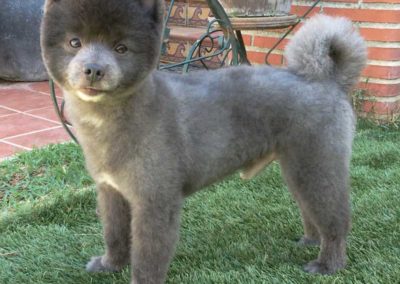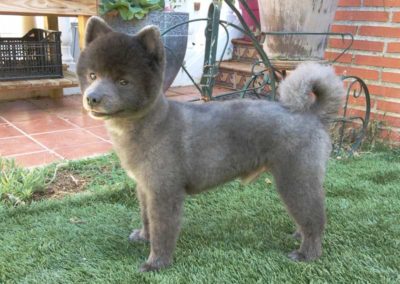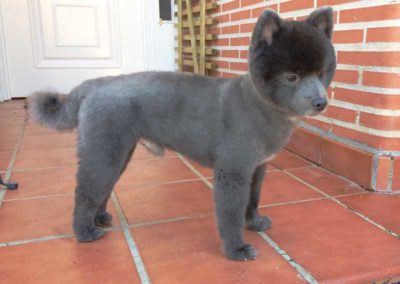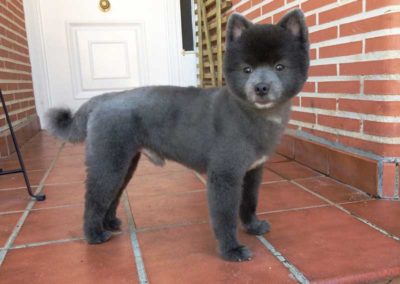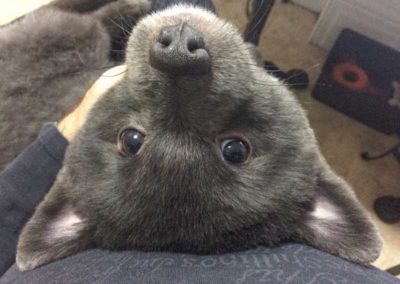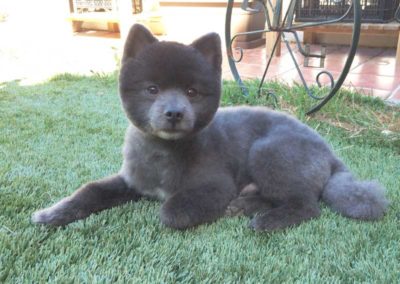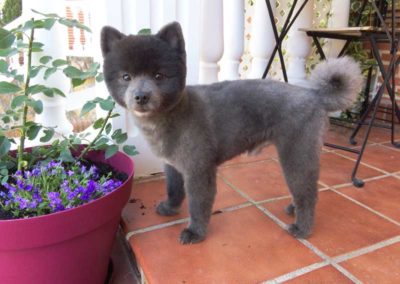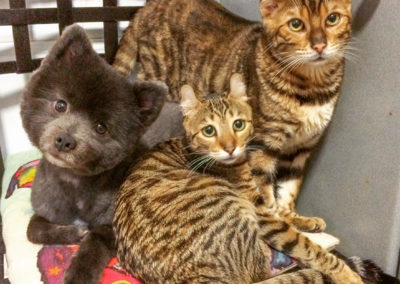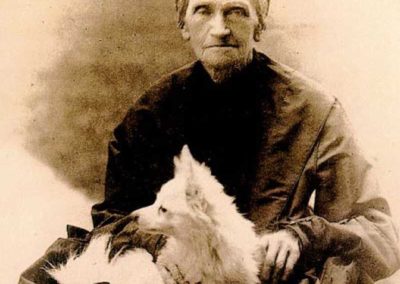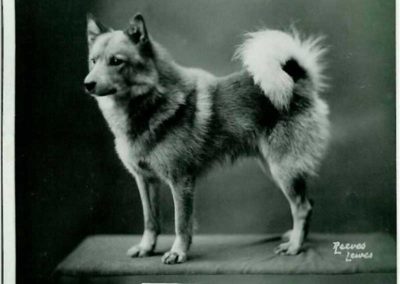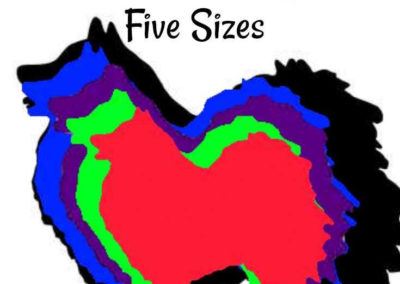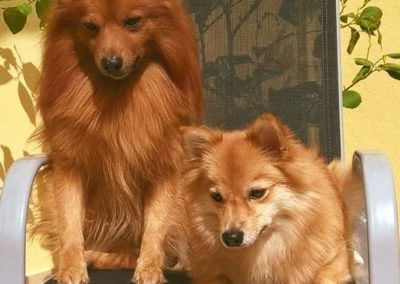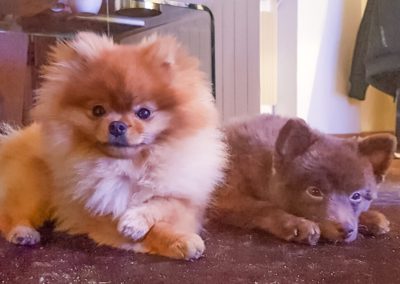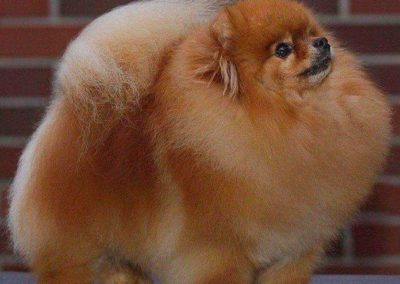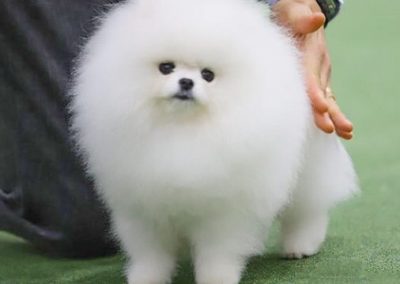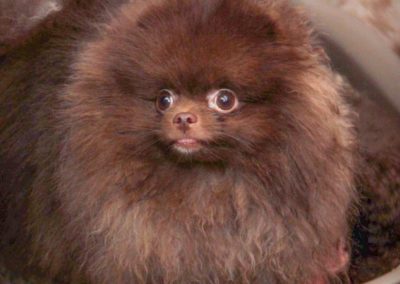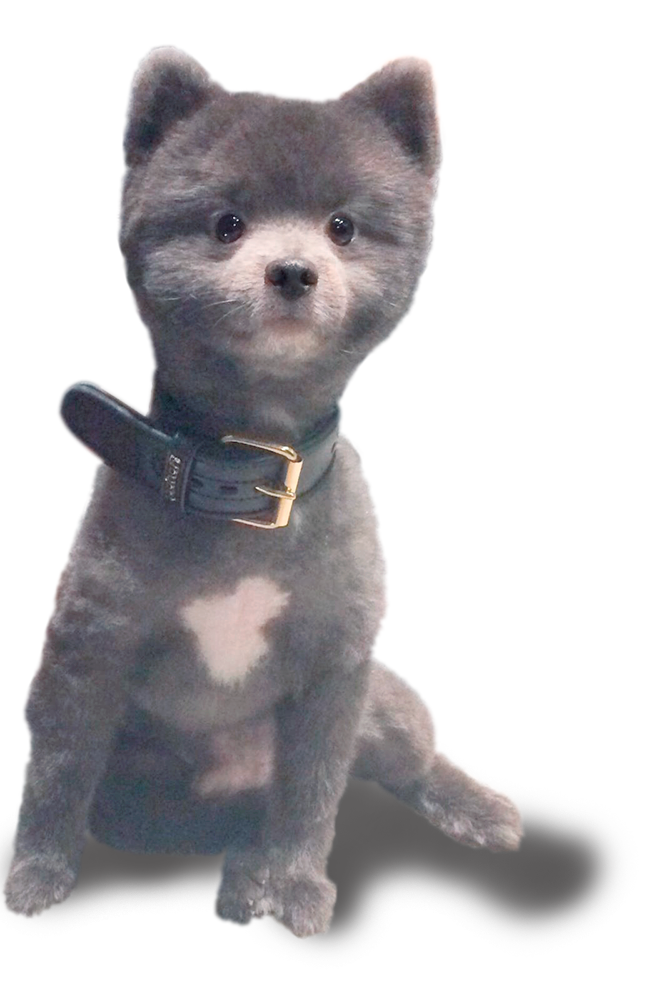
Exotic Spitz
Spain's first Exotic Spitz doggery.
All Breeding animals free of genetic diseases, tested in UC Davis university (USA).

General description
The Exotic Spitz is a very exclusive breeding selection made by russian breeders and fixed in Spain with old German spitz bloodlines. The goal of this new breed is a healthy dog, hipoallergenic, with a small size that fits easily into the modern urban lifestyle, but with an agile behavior to be a great walking companion in the park or in the field, with bear cub look like, extraordinarily soft feel coat that doesn´t shed at all and won´t stain clothes or furniture , and that seems to be a large breed puppy its whole life, the eternal BEAR CUB that delights in being with their human companions, and that are bred just for enjoying them, that´s the Exotic Spitz!
Only exotic colors are accepted : Pewter Gray (Blue gene), Camel (Lilac gene), and Chocolate (choco gene) , in solid, particolor and tan variants (not accepted in classic german spitz nor in Pomeranian). Merle gene is not acepted but clear eyes are accepted from healthy genes. They have a 15 – 20 years of life expectancy. Male´s weight is around 7.7 / 9.9 lbs and female´s weight around 6.6 / 8.8 lbs.
Personality
The Exotic Spitz is a loving and outgoing dog that delights in being with people. They are highly intelligent and interactive dogs that also get on well with other pets, besides having no aggressiveness nor being into the “problematic” or “difficult to train“ breeds as some primitive dogs as shiba inu or czechoslovakian wolfdog. They are easygoing animals that delights in a quiet home living, but without any physical barrier due their right proportions for running or be close to you in your cycling trips. They are very well children and older people oriented as they walk at the same step than their human companions.
History (German Spitz pictures, not Exotic Spitz)
The Spitz´s dog group is a set of breeds resulting from an ancient extint asian wolf and whose main characteristic is that they have a double coat; the undercoat, short, woolish and the defense against inclement conditions, and usually lost in summertime; and the outer coat, with long and straight hair. Small, erect and pointed ears on the head. Curly and raised tail. The spitz breeds group is large, have breeds in every continent and with many sizes, such as: German Spitz, Volpino Italiano, Chow Chow, Eurasier, Akita Inu, Shiba Inu, Japanese Spitz, Hokkaido Siberian Husky, Alaskan Malamute, Sharpei, Keeshond, Pomeranian or Samoyedo, to say the most well-known. All the Nordic sled dogs are Spitzs but most of the Spitzs aren´t Nordic dogs.
The Exotic Spitz is developed from old toy german spitz bloodlines, of which were selected healthy animals (without the typical pomeranian pathologies), with a bear cub look like, in other words, furry head, small eyes, prominent muzzle, small and erect ears, great coat quality, dense undercoat and exotic colors, besides a quiet and very friendly temperament.
Obviously nowadays exotic spitz and german spitz are far away breeds; different coat colors (that aren´t accepted in each breed standars); different eyes shape and color; different coat texture and implant area; different head structure; different size and weight; different aptitude, in other words, DIFFERENT BREEDS.
Differences between Exotic Spitz and Pomeranians (Pomeranian pictures, not Exotic Spitz)
Both breeds share as same ancestry the German Spitz, but are different breeds in almost every respect.
The Pomeranian was developed in United Kingdom using German Spitz, and reducing them crossbreeding them with Chihuahua (that´s why some poms and their longhair chihuahua cousins are so similar) and giving them a longer hair crossbreeding them with pekingense dog (that´s how they got the short muzzle and big eyes of the current Pomeranians). From their Chihuahua and Pekingese background gene pool, some pomeranians, more than their look, have sadly inherited some pathologies that responsable breeders try to remove from the breed as the luxating patella tipical of the miniature breeds, eye problems due their eyes are bigger than their eye sockets typical so in chihuahua as in pekingese, dental problems due the wrong bite of the pekingese, open fontanella from the chihuahua, tracheal collapse, kidney diseases, alopecia….all these pathologies can have a proper treatment when is needed and that´s what the responsible breeders need to work with a selective breed for health and not only in beauty. Poms are highly intelligent and very friendly dogs.
Most of the pomeranians never should be nor highly groomed nor saved as they could have alopecia and problems to recover their coat. This problem doesn´t happens with the exotic spitz due the rich and dense undercoat. Exotic Spitz coat can always be kept groomed (not saved) and coat will grow in perfect condition.
The Exotic Spitz comes from the Toy German Spitz (named still pomeranian in many canine federations, and that´s why there are so many mistakes between the breeds), developed in Russia and fixed in Spain to seem a bear cub, but without a blood drop from chihuahua nor pekingese, and just working a selective breeding in health, beauty and selecting only the exotic colors (blue, lilac and chocolate, which are not accepted nor in Pomeranian nor in classic German Spitz dog breeds). The Exotic Spitz has a wooly coat (a bit curled when wet), not so longer as the Pomeranian, that is kept groomed in order to improve their cub look (never saved! just groomed!), has compact proportions, doggy muzzle, small eyes and inside their sockets, scissors bite, no fontanela and a very good health condition.

